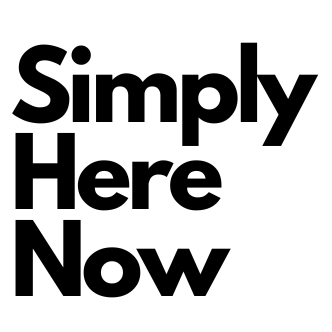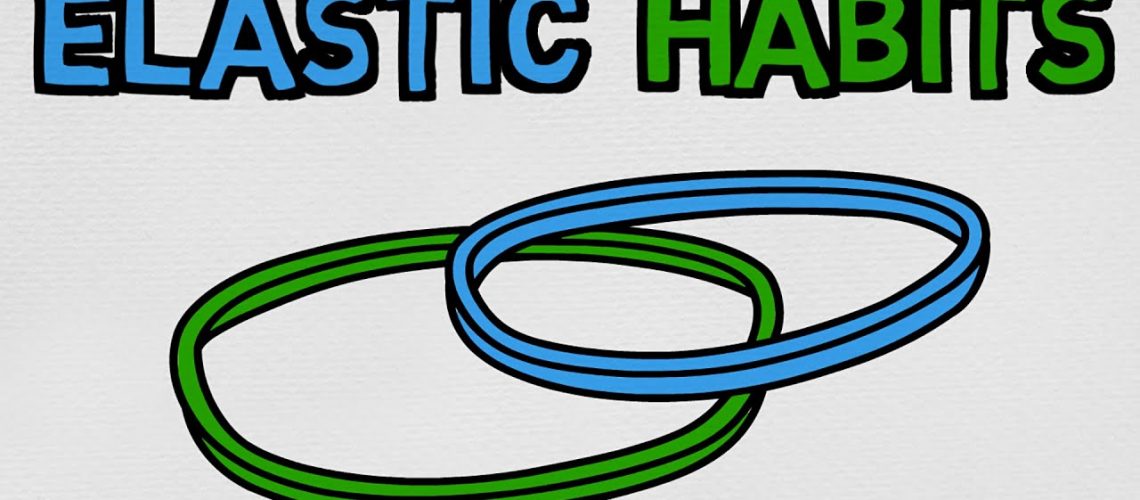How can we become consistent with our habits so they actually stick? The solution is to make our habits elastic. Here's how.
Video by Better Than Yesterday
Key Takeaways
Why do most people fail at creating habits that stick?
Well, there could be plenty of factors, but one major reason is they are not consistent with them. They might achieve their habit goal one day, but then the next day something comes up, and they skip doing the habit altogether.
But the point of any habit, is to make it a habit in the first place. This means doing it every single day without fail. So how can we do that? How can we become consistent with our habits so they actually stick?
The solution is to make our habits elastic.
Here's an example:
This is Mike. Every single year he sets his New Year’s resolutions. Which are: Playing the piano every day for 1 hour. Exercising by going to the gym, 5 times per week. Reading 25 pages of a book every night.
Those are really good goals to strive for. But every single year Mike fails to establish them as habits. He keeps it up for a little while, but usually two months in, his habits fall apart. And it’s obvious why.
While his goals are achievable, they don’t offer much room for maneuver and they are difficult to keep up at this intensity.
- Whenever Mike got home from work exhausted, he didn’t feel like practicing the piano for 1 hour. So he didn’t practice at all.
- Going to the gym also felt too difficult, so he skipped it that day.
- And while he enjoyed reading every night, he sometimes didn’t read anything, because he didn’t have the time to read the full 25 pages. Especially if he was reading a more difficult or technical book.
Every single time Mike was having a tough day, he wasn’t able to even start his habits. And because he wasn’t able to be consistent, his habits fell apart. However this year, Mike took a different approach to his habits. A more elastic one.
First, he gave himself more variety.
- Going to the gym was his original exercise goal, but now he also came up with two more exercise options. Going for a bike ride and jumping rope at home. This gave Mike more opportunities to be consistent with his exercise.
Second, he gave each of those options, 3 difficulties. Easy, medium and hard. Or as he liked to call them: Mini, Plus and Elite.
- For easy or Mini habit, he had to ride his bike for 3 minutes or jump rope just 10 times. That is all. But if he wanted his habit to count as medium or Plus, he had to ride his bike for 15 minutes or do 100 rope jumps. And finally, for the habit to count as hard or Elite, he had to ride his bike for half an hour or jump rope 500 times.
- Now, whenever Mike went to the gym, that automatically counted as a medium completion. That’s because whenever he showed up there, he always finished his weightlifting workout. For that reason he doesn’t have a Mini version if he goes to the gym.
- But if he wanted to reach his elite completion, he had to finish his gym workout, along with medium bike ride or medium rope jumps. If Mike managed to complete any of those options, he achieved his exercise habit for the day.
Another important thing that Mike did, was he set up a big calendar in his room, so he could track all of his habits.
- Whenever he completed the habit for the day, he put a color sticker on it. For his Mini habit, he put a green sticker on. For his Plus habit, he put a blue sticker. And for finishing his Elite habit, he put on a red sticker.
- Also the calendar was strategically located in a visible place and it served as a reminder. This way Mike would never forget to complete the habits, like he sometimes did with his previous systems.
- The calendar motivated Mike to keep on going, because he didn’t want to break the streak he was creating.
To Mike, it didn’t matter which option or difficulty he achieved that day. All that mattered to him, was that he was consistent with his habits, and he never missed a day.
This system allowed Mike to not fail his New Year’s resolutions. His previous systems used to force him to go to the gym. But Mike often skipped it altogether, if he had a tough day.
- Now when he comes home from work, exhausted and not feeling like exercising, Mike does the Mini version of a habit, because it’s so simple and easy to do. I mean 10 rope jumps. That’s like nothing. However the habit is maintained, which is the important part.
- But perhaps the next day, Mike comes home slightly more energized. So he might decide to do his medium aka Plus version of a bike ride, which is 15 minutes.
- However, since the weather is nice and he’s enjoying himself, he extends his ride. He rides around for almost 1 hour, which is more than enough for an Elite completion. Mike didn’t intend to do 1 hour at first. His medium difficulty is 15 minutes after all. But once he started, he found it easy to keep on going.
Starting something is often the biggest problem we have. But having a Mini or a Plus version of a habit makes starting more manageable, since it’s not as intimidating.
- You’re less likely to start if you know you have a full hour of exercise ahead of you. But knowing you only have to work out for 15 minutes, doesn’t sound so bad. And once you start, it’s so much easier to keep on going since you’re already doing the thing.
- Mike’s previous habit system had him do the exact same amount of exercise on busy days, as on wide open days. But elastic habits give Mike the freedom to do less on a tough day, and more on a good day. And this is precisely what he needs to match the flow of his life.
Make no mistake, everyone wants to be super productive every single day. But if you think only Elite habits are acceptable, then you’re in for a negative surprise. Life is dynamic and not static.
- You might get sick, you could come home tired, you might have a deadline to catch and have no time to spare. Would you still be able to stick to the habit in that situation? Most people just skip it altogether and do nothing instead. Mike was no different. But it’s that exact thinking that we should give our 100% all the time, that keeps people from forming habits that stick.
For that reason, it’s way better to have imperfect, but consistent habits, rather than perfect habits you do every now and then. That is why you should make your habits more flexible or elastic.
- When life gets in the way, you will still be able to do the easy, Mini version, because it’s not as intimidating. And like I said, after starting it’s much easier to keep on going for a little longer. But more importantly, you will always do something, which is much better than doing nothing.
- Now on a different day, when you feel motivated and energized, you can do the Plus or even the Elite difficulty. It’s the greatest feeling when you complete that difficult task.
- But if you force yourself to go for outrageously ambitious goals all the time, it can burn you out and keep you from forming good lifelong habits. You don’t want to despise your habits now, do you?
That is why you need all 3 difficulties. Each person responds uniquely to different difficulties, that’s why how you size your goals should be completely up to you.
- Your Mini goal needs to be something you can do every single day without exception. This is absolutely crucial. You should be able to complete the habit on the worst day of your life.
- If you miss any days, it means your Mini goals are too big and too difficult. You need to make them even smaller. This will solve your consistency problem and keep you going.
So be like Mike and keep your Mini goals, Mini. That means playing 1 song on the piano, reading 1 page of a book, or doing 10 rope jumps. Of course these were the goals that Mike set up for himself. You should adjust your habits to your own needs.
But as Mike progressed over time, he re-adjusted his targets. For example, he decided that 10 rope jumps were too easy for him. So he bumped it up to 25. He could do that, because he’s in control of the system, not the other way around.
- Elastic habits are meant to be done every day.
- How and when you do them each day is flexible and up to you, but they must be done. I know that every day sounds terrifying. But it’s not, once you realize that you can complete the Mini version in less that one minute. Intimidation gone. Streak maintained.
- And you shouldn’t feel bad if you’re only able to complete the Mini version. You’re still making progress every single day, after all. All progress is success. Because success is made out of small bits of progress.
Those who are able to move forward every day, even if it’s just a few inches, are the ones that change their lives. Elastic habits will allow you to be that person.

